
2021海上丝绸之路国际产学研用合作会议(福州)
2021 Maritime Silk Road International Conference on the Cooperation and Integration of Industry, Education, Research and Application (Fuzhou)
聚焦国际电子信息 赋能产学研用合作
Focus on international electronic information and empower industry-education-research-application cooperation
参会指南
Conference Guide
会议背景
为整合全国高等院校、科研单位和企业资源,搭建国际产学研用合作平台,自2018年6月以来,由教育部主办、相关省市教育厅(局)承办的国际产学研用合作会议已形成多地办会格局,并被列入十四五教育事业发展规划。会议充分对接了国内外发展与合作需求,赢得各方欢迎。为继续充分发挥该会议平台的资源优势,促进福建省及福州市高校、科研院所、重点企业与国内和国际产学研用深度合作,由教育部学校规划建设发展中心主办,福建教育厅、福州大学承办的“2021海上丝绸之路国际产学研用合作会议”将于2021年11月30日在福州市举办。本次会议邀请了全球各地院士、著名专家、学者演讲,重点开展与海外电子信息在产学研用领域中的交流与合作,推动电子信息产品制造业、软件产业和集成电路、新能源、新兴通信业务等产业发展。
Conference Background
The International Conference on the Cooperation and Integration of Industry, Education, Research and Application aims to integrate the resources of universities, research institutes, and enterprises and build an international cooperation platform for industry, education, research, and application. Since founded in June 2018, many cities have undertaken it.
To continue using this international platform and promoting the in-depth cooperation among universities, research institutes, and enterprises, the 2021 Maritime Silk Road International Conference on the Cooperation and Integration of Industry, Education, Research and Application will be held in Fuzhou, Fujian, China, on Nov. 30 - Dec. 1, 2021. It is hosted by Fuzhou University and sponsored by the Education Department of Fujian Province and the National Center for Schooling Development Programme. The conference has invited academicians, distinguished experts, and scholars from all over the world to present their recent works. This conference focuses on exchanging and cooperation in electronics and information technology for industry, education, research, and application.
会议主题
聚焦国际电子信息 赋能产学研用合作
会议时间
2021年11月30日-12月1日
会议地点
福建省福州市闽侯县福州大学城新区学园路2号福州大学图书馆明德厅
主办单位
教育部学校规划建设发展中心
承办单位
福建省教育厅
福州大学
会议主席
陈志璋, 教授,IEEE Fellow, 加拿大工程院院士
会议组委会主任
李福山,教授,福州大学物理信息工程学院副院长
程树英,教授,福州大学物理信息工程学院副院长
黄立勤,教授,福州大学物理信息工程学院院长助理
会务组联系方式
福州大学物理信息工程学院:
黄立勤 18959193399,hlq@fzu.edu.cn
疫情防控咨询人员:
谢荣华 13859018818
Conference Theme
Focus on international electronic information and empower industry-education-research-application cooperation
Conference Time
30th, November-1st, December 2021
Conference Venue
Mingde Hall, Fuzhou University Library, No. 2 Xue-Yuan Road, Fuzhou University Town, Minhou County, Fuzhou, Fujian,China
Sponsor
The National Center for Schooling Development Programme
The Education Department of Fujian Province
Organizer
Fuzhou University
Conference Chair
Zhi-Zhang Chen, Professor,IEEE Fellow, CAE Fellow
Directors of the Conference Organizing Committee
Fu-Shan Li, Professor, Associate Dean, College of Physics and Information Engineering, Fuzhou University
Shu-Ying Cheng, Professor, Associate Dean, College of Physics and Information Engineering, Fuzhou University
Li-Qin Huang, Professor, Assistant Dean, College of Physics and Information Engineering, Fuzhou University
Contact Person
Li-Qin Huang, College of Physics and Information Engineering, Fuzhou University, Cell Phone: 18959193399. Eamil: hlq@fzu.edu.cn .

参会者请预先扫描上面二维码获取报名链接
To attend, please scan the QR code for the registration in advance.
会议提供注册参会者免费注册、中晚餐。其它自费
Complimentary free registration, lunches and dinners for the registered attendees.
直播链接Live Streaming Link:
https://wx.vzan.com/live/tvchat-1455449158?v=637733492940697390
直播二维码 Live Streaming QR Code:

Conference Arrangement (会议时间安排)
2021/11/30(Tuesday星期二) |
Time |
Agenda |
7:45-8:30 |
参会者注册Registration of Delegates |
8:30-8:40 |
主持人介绍大会来宾Introduction |
8:40-8:50 |
省厅领导致辞A speech by the Representative of Fujian Province |
8:50-9:00 |
福州大学领导致辞A speech by the Representative of Fuzhou University |
9:00-9:10 |
会议主席致辞A speech by the Conference Chair |
9:15-10:00 |
直播厦门主会场开幕式Opening Ceremony in Xiamen University |
10:00-10:30 |
集体合影、茶歇 Group Photo and Tea Break |
大会报告Conference Reports |
10:30-11:00 |
Title: Bioimagers-Playing at the Intersection of Engineering and Health Sciences
Speaker(报告人): Prof. M. Jamal Deen, Foreign Academician, Chinese Academy of Sciences, Fellow and Former President of the Royal Society of Canada, McMaster University, Canada(加拿大). |
11:00-11:20 |
Title: Image Understanding of Pathway Figures in Biomedical Articles
Speaker(报告人): Prof. Dong Xu, AAAS Fellow and AIMBE Fellow, University of Missouri-Columbia, USA(美国). |
11:20-11:40 |
Title: Brief Overview of Electromagnetic Selective Structures
Speaker(报告人): Prof. Zhongxiang Shen, IEEE Fellow, Nanyang Technological University, Singapore(新加坡). |
11:40-12:00 |
Title: Deep Space Exploration Technology of Large Aperture Radio Telescope
Speaker(报告人): Prof. Haiwen Liu, Xi’an Jiaotong University, Xi’an, China(中国). |
12:00-14:00 |
Lunch Time |
14:10-14:30 |
Title: Fluorescence Lifetime Imaging Microscopy and its Biomedical Applications
Speaker(报告人): Prof. Junle Qu, SPIE Fellow, Shenzhen University, China(中国). |
14:30-14:50 |
Title: In Vivo Multiphoton Microscopy and Multiphoton Absorption Based Laser Therapy
Speaker(报告人): Prof. Haishan Zeng, University of British Columbia, Canada(加拿大). |
14:50-15:10 |
Title: Optical Detection of Singlet Oxygen in Vitro and in Vivo
Speaker(报告人): Prof. Steffen Hackbarth,Humboldt-Universität zu Berlin, Germany(德国). |
15:10-15:30 |
Title: MicroLED Display Technology and Progress in Commercialized
Speaker(报告人): Prof. Chen-Ke Hsu,Sanan Optoelectronics, Taiwan(中国台湾). |
15:30-15:50 |
Tea Break |
15:50-16:10 |
Title: Short-Reach Optical Communications: A Review of Current Technologies and Future Trends
Speaker(报告人): Prof. Keping Long, University of Science and Technology Beijing, China(中国). |
16:10-16:30 |
Title: Advances of Carbon Nanotube Field Effect Transistors for Ultralow Power Applications
Speaker(报告人): Prof. Qing Zhang,Nanyang Technological University, Singapore(新加坡). |
16:30-16:50 |
Title: The Brief Story of Compound Semiconductor
Speaker(报告人): Prof. Shumin Wang, Chalmers University of Technology, Gothenburg, Sweden(瑞典). |
16:50-17:10 |
Title: Emerging chalcogenide solar cells
Speaker(报告人): Prof. Xiaojing Hao, University of New South Wales, Australia(澳大利亚). |
17:10-17:30 |
Title: Wireless Energy Harvesting and Power Transfer
Speaker(报告人): Prof. Yi Huang,IEEE Fellow, the University of Liverpool, UK(英国). |
2021/12/1(Wednesday 星期三) |
Time |
Agenda |
8:30-9:00 |
Title: High-Performance Metamaterials and Applications
Speaker(报告人): Prof. Zhizhang (David) Chen, IEEE Fellow, CAE Fellow, Dalhousie University, Canada(加拿大). |
9:00-9:20 |
Title: Overview of Advanced GaN HEMT Modelling and Measurements at NUS
Speaker(报告人): Prof. Yongxin Guo, IEEE Fellow, National University of Singapore, Singapore(新加坡). |
9:20-9:40 |
Title: Peptide-based Data Storage
Speaker(报告人): Prof. Francis C.M. Lau, IEEE Fellow, the Hong Kong Polytechnic University, Hong Kong(中国香港). |
9:40-10:00 |
Title: Intelligent Facial Analytics and Applications
Speaker(报告人): Prof. Wen-Huang Cheng, IET Fellow, Yang Ming Chiao Tung University, Taiwan(中国台湾). |
10:00-10:20 |
Tea Break |
10:20-10:40 |
Title: Deep Face Synthesis: Reconstruction, Augmentation, and Animation
Speaker(报告人): Prof. Chia-Wen Lin, IEEE Fellow, Tsing Hua University, Taiwan(中国台湾). |
10:40-11:00 |
Title: Collaborating with Industry: A Canadian University’s Perspective
Speaker(报告人): Prof. Zheng Liu,SPIE Fellow, The University of British Columbia, Canada(加拿大). |
Introduction to the Keynote Presentations (主旨演讲简介)
KEYNOTE SPEECH
10:30-11:00, Tuesday, Nov. 30, 2021
Bioimagers - Playing at the intersection of Engineering and Health Sciences
Prof. M. Jamal Deen (加拿大)
Foreign Academician, Chinese Academy of Sciences
McMaster University, CANADA
E-mail: jamal@mcmaster.ca
Abstract
Some of the grand challenges in engineering for current and future societal needs require smart sensors, many of which are constructed using nano/opto-electronic technologies. For example, in the health area, smart sensing systems are required for screening, diagnostics and monitoring of a variety of diseases and illnesses for the health of well-being of individuals. Also, cancer is one of the leading causes of death globally. However, if the cancer can be detected in the very early stages of development, the survival rate of the patients is significantly improved and for some cancers such as breast or prostate cancer, the survival rate is close to 100%. Further, early detection translates into improved treatment outcomes at significantly reduced costs. Among the different imaging techniques, positron emission tomography (PET) is demonstrated to be an incredibly valuable tool for screening and diagnosis of cancer since the PET system is able to generate functional image to observe biological processes in the body. These systems require high precision, high temporal resolution and high contrast medical images for more accurate diagnoses. In the early days, most commercial PET systems were based on bulky photomultiplier tubes (PMTs), which lack compatibility with multi-modal PET/MRI imaging. A promising solution is the integration of single-photon avalanche diodes (SPADs) with time-to-digital converters (TDCs), integrated closely together on the same wafer to form digital silicon photomultipliers (dSiPMs). These dSiPMs are capable of achieving comparable gain and speed to PMTs, while maintaining full compatibility with strong magnetic fields, lower power consumption, compact size and low cost. Our work, at the intersection of engineering and health sciences, focusses on the design of SPAD-based image sensors implemented in standard silicon technology, as it provides the lowest cost alternative, compared to SPADs in custom processes. By improving the noise performance of standard silicon SPADs with guard ring and time-gating techniques, improving photon detection efficiency (PDE) through multi-junction SPAD structures, and producing higher resolution TDCs in compact areas, our work can help in making SPAD-based sensors a new gold-standard for biomedical imaging applications.
About the speaker
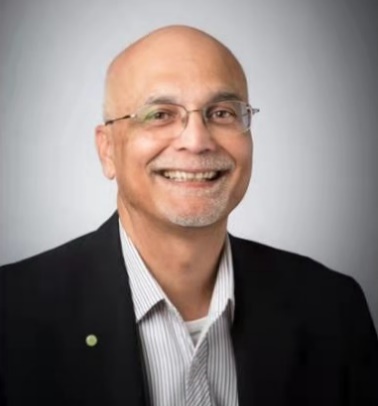 Dr. M. Jamal Deen is currently Distinguished University Professor and Senior Canada Research Chair in Information Technology, McMaster University. His current research interests are nanoelectronics, optoelectronics, nanotechnology, data analytics and their emerging applications to health and environmental sciences. Dr. Deen’s research record includes more than 620 peer-reviewed articles (about 20% are invited and an h-index of 70), two textbooks on “Silicon Photonics- Fundamentals and Devices” and ”Fiber Optic Communications: Fundamentals and Applications”, 6 awarded patents that have been used in industry, and 21 best paper/poster/ presentation awards.
Dr. M. Jamal Deen is currently Distinguished University Professor and Senior Canada Research Chair in Information Technology, McMaster University. His current research interests are nanoelectronics, optoelectronics, nanotechnology, data analytics and their emerging applications to health and environmental sciences. Dr. Deen’s research record includes more than 620 peer-reviewed articles (about 20% are invited and an h-index of 70), two textbooks on “Silicon Photonics- Fundamentals and Devices” and ”Fiber Optic Communications: Fundamentals and Applications”, 6 awarded patents that have been used in industry, and 21 best paper/poster/ presentation awards.
As an undergraduate student at the University of Guyana, Dr. Deen was the top ranked mathematics and physics student and the second ranked student at the university, winning the Chancellor’s gold medal and the Irving Adler prize. As a graduate student, he was a Fulbright-Laspau Scholar and an American Vacuum Society Scholar. He is a Distinguished Lecturer of the IEEE Electron Device Society for more than a decade. His awards and honors include the Callinan Award as well as the Electronics and Photonics Award from the Electrochemical Society; the Distinguished Researcher Award from the Province of Ontario; a Humboldt Research Award from the Alexander von Humboldt Foundation; the Eadie Medal from the Royal Society of Canada; McNaughton Gold Medal (highest award for engineers), the Fessenden Medal and the Ham Education Medal, all from IEEE Canada. In addition, he was awarded the four honorary doctorate degrees in recognition of his exceptional research and scholarly accomplishments, professionalism and valued services. Dr. Deen has been elected by his peers as Fellow/Academician of twelve national academies and professional societies including The Royal Society of Canada (FRSC) - The Academies of Arts, Humanities and Sciences of Canada (the highest honor for academics, scholars and artists in Canada); Academician (Foreign Member) of The Chinese Academy of Sciences (A-CAS, China’s highest national honor in the area of science and technology and highest academic title); The World Academy of Sciences (FTWAS), National Academy of Sciences India (FNASI-Foreign); The Institute of Electrical and Electronic Engineers (FIEEE); The American Physical Society (FAPS); and The Electrochemical Society (FECS). Most recently, he was elected to the Order of Canada (July 2018), the highest civilian honor awarded by the Government of Canada.
KEYNOTE SPEECH
11:00-11:20, Tuesday, Nov. 30, 2021
Image Understanding of Pathway Figures in Biomedical Articles
Prof. Dong Xu (美国)
University of Missouri-Columbia,USA
Abstract
Many high-quality biological pathways are presented in figures and text in the biomedical literature, which is a great resource for biological mechanism studies and precision medicine practices. These pathways need to be carefully curated, reconciled, and transformed into a computable form. Current manual curation approaches are inadequate in keeping up with the pace of the literature growth. New bio-curation approaches are needed to streamline the identification of gene interactions from pathway figures and text. We propose a pathway curation approach for identifying genes and their interactions using both figures and text of biomedical articles. Our method integrates deep learning-based object detection models with Google optical character recognition service to extract genes and their interactions from pathway figures. Our pipeline was evaluated on the figures from PubMed publications with manual annotations. The results demonstrated that our model can effectively retrieve genes and their interactions in pathway figures. The proposed pipeline may accelerate various applications of the latest biomedical discoveries. We also developed a web server to provide the gene interaction curation on uploaded pathway figures and biomedical articles.
About the speaker
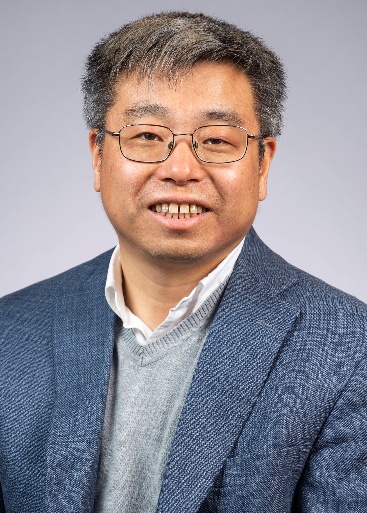 Prof. Dong Xu is Curators’ Distinguished Professor in the Department of Electrical Engineering and Computer Science, with appointments in the Christopher S. Bond Life Sciences Center and the Informatics Institute at the University of Missouri-Columbia. He obtained his Ph.D. from the University of Illinois, Urbana-Champaign in 1995 and did two years of postdoctoral work at the US National Cancer Institute. He was a Staff Scientist at Oak Ridge National Laboratory until 2003 before joining the University of Missouri, where he served as Department Chair of Computer Science during 2007-2016 and Director of Information Technology Program during 2017-2020. He has published more than 400 papers with more than 19,000 citations and an H-index of 69 according to Google Scholar. He was elected to the rank of American Association for the Advancement of Science (AAAS) Fellow in 2015 and American Institute for Medical and Biological Engineering (AIMBE) Fellow in 2020.
Prof. Dong Xu is Curators’ Distinguished Professor in the Department of Electrical Engineering and Computer Science, with appointments in the Christopher S. Bond Life Sciences Center and the Informatics Institute at the University of Missouri-Columbia. He obtained his Ph.D. from the University of Illinois, Urbana-Champaign in 1995 and did two years of postdoctoral work at the US National Cancer Institute. He was a Staff Scientist at Oak Ridge National Laboratory until 2003 before joining the University of Missouri, where he served as Department Chair of Computer Science during 2007-2016 and Director of Information Technology Program during 2017-2020. He has published more than 400 papers with more than 19,000 citations and an H-index of 69 according to Google Scholar. He was elected to the rank of American Association for the Advancement of Science (AAAS) Fellow in 2015 and American Institute for Medical and Biological Engineering (AIMBE) Fellow in 2020.
KEYNOTE SPEECH
11:20-11:40, Tuesday, Nov. 30, 2021
Brief Overview of Electromagnetic Selective Structures
Prof. Zhongxiang Shen (新加坡)
Nanyang Technological University, Singapore
Abstract
In this talk, we intend to provide a brief overview of electromagnetic selective surfaces/structures (EMSS). According to the properties of an incident electromagnetic wave, EMSS can be divided into four categories: frequency-selective structure (FSS), polarization-selective surface (PSS), angle-selective surface (ASS), and energy-selective surface (ESS). Recent developments and advances in the design of EMSS will also be briefly introduced. Finally, future opportunities in the areas of the design and analysis of EMSS will be suggested.
About the speaker
 Prof. Zhongxiang Shen received the B. Eng. degree from the University of Electronic Science and Technology of China, Chengdu, China, in 1987, the M. S. degree from Southeast University, Nanjing, China, in 1990, and the PhD degree from the University of Waterloo, Waterloo, Ontario, Canada, in 1997, all in electrical engineering.
Prof. Zhongxiang Shen received the B. Eng. degree from the University of Electronic Science and Technology of China, Chengdu, China, in 1987, the M. S. degree from Southeast University, Nanjing, China, in 1990, and the PhD degree from the University of Waterloo, Waterloo, Ontario, Canada, in 1997, all in electrical engineering.
From 1990 to 1994, he was with Nanjing University of Aeronautics and Astronautics, China. He was with Com Dev Ltd., Cambridge, Canada, as an Advanced Member of Technical Staff in 1997. He spent six months each in 1998, first with the Gordon McKay Laboratory, Harvard University, Cambridge, MA, and then with the Radiation Laboratory, the University of Michigan, Ann Arbor, MI, as a Postdoctoral Fellow. In Jan. 1999, he joined Nanyang Technological University, Singapore, as an assistant professor, where he is currently a full professor in the School of Electrical and Electronic Engineering. Dr. Shen served as the Chair of the IEEE MTT/AP Singapore Chapter in 2009. From Jan. 2010 to Aug. 2014, he was the Chair of IEEE AP-S Chapter Activities Committee. From July 2014 to December 2018, he served as the Secretary of IEEE AP-S. He was an elected AdCom member of the IEEE AP-S from Jan. 2017 to Dec. 2019. He is currently serving as an Associate Editor of the IEEE Transactions on Antennas and Propagation. From Jan. 2021 to Dec. 2023, he is a Distinguished Lecturer of the IEEE AP-S.
Prof. Shen is an IEEE Fellow. His research interests include small and planar antennas for various wireless communication systems, analysis and design of frequency-selective structures and absorbers, hybrid numerical techniques for modeling RF/microwave components and antennas. He has authored more than 220 journal papers (among them 170 were published in IEEE Journals) and also presented nearly 200 papers at international conferences.
KEYNOTE SPEECH
11:40-12:00, Tuesday, Nov. 30, 2021
Deep Space Exploration Technology of Large Aperture Radio Telescope
Prof. Haiwen Liu (中国)
Xi’an Jiaotong University, China
Abstract
In recent years, following the first generation of single-beam feed and the second generation of multi-beam feed technology, research teams in the United States, Britain, Australia, and other countries have explored and carried out the development of the third generation of low-temperature phased array feed (PAF) based on the working principle of phased array radar. This PAF technology reconstructs the signal receiving optical path by adjusting the feed array antenna’s phase plane, forms a continuous coverage phased beam in the detection space, and greatly improves the performance of key indicators such as field of view and sky survey speed and resolution of deep space exploration equipment. With the continuous innovation of these world advanced large-scale scientific observation equipment and engineering technology, PAF space exploration technology plays a critical role in significant scientific discoveries and technological changes such as national space exploration, deep space exploration, and human-crewed spaceflight.
About the speaker
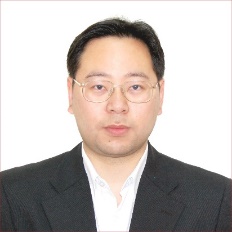 Prof. Haiwen Liu, Professor (level-2), Xi’an Jiaotong University, Shaanxi, P. R. China. He is the specially Appointed Professor of Changjiang Scholars by the Ministry of Education of China, a Professor of the National 100 million Talents Project, a specially mentioned Expert by the Chinese State Council, a winner of the National “Young and Middle-aged Experts with Outstanding Contributions,” a winner of German Humboldt Scholarship and JSPS scholar of the University of Tokyo. He is the director of the Key Laboratory of Deep Space Exploration Intelligent Information Technology of Shaanxi Province. He has conducted over more than 20 research projects, including one national NSFC key project, four joint and regional projects, one national support project, one national key research, and development project, one project sponsored by the Japanese Academic Revitalization Society project, one project by a Humboldt Foundation of Germany, and one project by Korea National Research Foundation.
Prof. Haiwen Liu, Professor (level-2), Xi’an Jiaotong University, Shaanxi, P. R. China. He is the specially Appointed Professor of Changjiang Scholars by the Ministry of Education of China, a Professor of the National 100 million Talents Project, a specially mentioned Expert by the Chinese State Council, a winner of the National “Young and Middle-aged Experts with Outstanding Contributions,” a winner of German Humboldt Scholarship and JSPS scholar of the University of Tokyo. He is the director of the Key Laboratory of Deep Space Exploration Intelligent Information Technology of Shaanxi Province. He has conducted over more than 20 research projects, including one national NSFC key project, four joint and regional projects, one national support project, one national key research, and development project, one project sponsored by the Japanese Academic Revitalization Society project, one project by a Humboldt Foundation of Germany, and one project by Korea National Research Foundation.
Prof. Li has published more than150 SCI papers (more than 80 IEEE journals) and has 16 invention patents. He has won the two best paper awards in the International Conference award, the 1st and 2nd prizes of the Provincial Natural Science Award, the 2nd prize of the Provincial Technology Invention Award. He has also served as the editor-in-chief of the reputable International Journal of RF Microwave and Computer-Aided Engineering (SCI Impact Factor of 1. 528) (he is the first Chinese scholar to serve in this EiC capacity). He is the Fellow of the Chinese Electronics Society and the Deputy Director of the Superconductivity Committee of the Chinese Electronics Society. He was the Chair of the Committee on Microwave and Circuit Systems for Young Scientists of the Chinese Electronic Society and the Chair of the Youth Working Committee of the Microwave Committee of the Chinese Electronics Society.
KEYNOTE SPEECH
14:10-14:30, Tuesday, Nov. 30, 2021
Fluorescence Lifetime Imaging Microscopy and its Biomedical Applications
Prof. Junle Qu(中国)
Shenzhen University, China
Abstract
Fluorescence lifetime imaging microscopy (FLIM) has been widely used in biomedicine. Since fluorescence lifetime is not affected by those factors which affect the intensity of light, such as probe concentration, excitation intensity and photo bleaching etc, FLIM has many advantages, such as high specificity, high sensitivity, the capability of quantitative measurement in monitoring microenvironment changes and reflecting the intermolecular interactions. In this talk I will first give an overview on FLIM technology. Then I will review its recent progress, and discuss the challenges for FLIM technology, for example, how to improve its spatial resolution, imaging speed etc. Finally, I will present recent applications of FLIM in biomedicine, including microenvironment sensing, cell cycle monitoring, drug and cell interactions, quantification of the macromolecular concentrations as well as guiding the tumor resection surgeries in clinics.
About the speaker
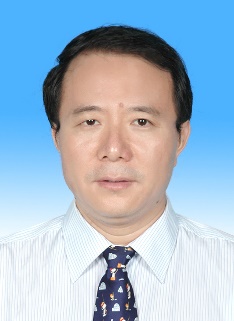 Dr. Junle Qu is a professor at the College of Physics and Optoelectronic Engineering, Shenzhen University and presently serving as the director of Center for Biomedical Optics and Photonics. He graduated from Xi’ an Jiaotong University in 1992, and received his master’s as well as PhD degrees in 1995 and 1998 respectively from Xi ‘an Institute of Optics and Precision Mechanics, Chinese Academy of Sciences. He pursued his postdoctoral research at Indiana University (USA) from 2001 to 2003.
Dr. Junle Qu is a professor at the College of Physics and Optoelectronic Engineering, Shenzhen University and presently serving as the director of Center for Biomedical Optics and Photonics. He graduated from Xi’ an Jiaotong University in 1992, and received his master’s as well as PhD degrees in 1995 and 1998 respectively from Xi ‘an Institute of Optics and Precision Mechanics, Chinese Academy of Sciences. He pursued his postdoctoral research at Indiana University (USA) from 2001 to 2003.
Professor Junle Qu’s present research interests include multimodal nonlinear optical imaging, fluorescence lifetime imaging, super-resolution optical imaging, nanobiophotonics technology and light induced therapy. More than 350 scientific papers in peer reviewed journals have been published by Professor Junle Qu. Some of his notable publications include Nature Photonics, Nature Communications, Chemical Society Reviews, Chemical Reviews, Advanced Materials, Nano Letters, Light: Science & Applications, Optics Letters, Optics Express and Biomedical Optics Express. Total 35 invention patents had been authorized to him till date, out of which 7 patents are transferred. Dr. Junle Qu is a Fellow of SPIE, and has been serving as the director of Biomedical Photonics Committee of Chinese Optical Society. He is the associate editor of Journal of Innovative Optical Health Sciences (JIOHS), and also serving presently in the editorial board of Frontiers of Optoelectronics, Biosensors and Acta Optica Sinica.
KEYNOTE SPEECH
14:30-14:50, Tuesday, Nov. 30, 2021
In vivo multiphoton microscopy and multiphoton absorption based laser therapy
Prof. Haishan Zeng (加拿大)
University of British Columbia, Canada
Abstract
Ultrafast (fs) laser enabled multiphoton absorption based light-tissue interaction has unique advantages for tissue imaging and therapeutic applications. All pertained physical phenomena occur only at the foci of the tightly focused laser beam, leading to highly localized treatment effect and imaging signal generation. In this talk, I will present two technologies we developed using this unique light-tissue interaction: (1) cellular resolution 3-D multiphoton microscopy imaging of human skin in vivo and (2) multiphoton absorption based photothermolysis for precise closure of single blood vessels in a mouse ear model. Clinical potential of these new technologies will also be discussed.
About the speaker
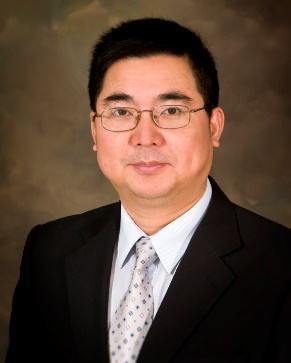 Prof. Haishan Zeng is a distinguished scientist with the BC Cancer Research Centre and a professor of Dermatology, Pathology, and Physics at the University of British Columbia (UBC). He received a B.Sc. on electronic physics from Peking University, a M.Sc. on electronic physics from the Chinese Academy of Sciences, and a Ph.D. on biophysics from UBC. For 30 years, Dr. Zeng’s research has been focused on the optical properties of biological tissues and light-tissue interaction, as well as their applications in medical diagnosis and therapy. His group has pioneered the multiphoton absorption based laser therapy and is at leading position in endoscopy imaging and Raman spectroscopy for in vivo early cancer detection. He has published 180 refereed journal papers, 17 book chapters, and 1 book (“Diagnostic Endoscopy”, CRC Press Series in Medical Physics and Biomedical Engineering). Dr. Zeng serves as Editorial Board members for the Journal of Biomedical Optics and the recently launched Translational Biophotonics. He is an Executive Organizing Committee member for the annual SPIE International Symposium on Biomedical Optics.
Prof. Haishan Zeng is a distinguished scientist with the BC Cancer Research Centre and a professor of Dermatology, Pathology, and Physics at the University of British Columbia (UBC). He received a B.Sc. on electronic physics from Peking University, a M.Sc. on electronic physics from the Chinese Academy of Sciences, and a Ph.D. on biophysics from UBC. For 30 years, Dr. Zeng’s research has been focused on the optical properties of biological tissues and light-tissue interaction, as well as their applications in medical diagnosis and therapy. His group has pioneered the multiphoton absorption based laser therapy and is at leading position in endoscopy imaging and Raman spectroscopy for in vivo early cancer detection. He has published 180 refereed journal papers, 17 book chapters, and 1 book (“Diagnostic Endoscopy”, CRC Press Series in Medical Physics and Biomedical Engineering). Dr. Zeng serves as Editorial Board members for the Journal of Biomedical Optics and the recently launched Translational Biophotonics. He is an Executive Organizing Committee member for the annual SPIE International Symposium on Biomedical Optics.
Prof. Zeng’s research has generated 28 granted patents related to optical diagnosis and therapy. Several medical devices derived from these patents including fluorescence endoscopy (ONCO-LIFE™) and rapid Raman spectroscopy (Vita Imaging Aura™) have passed regulatory approvals and are currently in clinical uses around the world. The Aura™ device using Raman spectroscopy for non-invasive skin cancer detection was awarded the Prism Award in the Life Sciences and Biophotonics category in 2013 by SPIE - the International Society for Optics and Photonics.
KEYNOTE SPEECH
14:50-15:10, Tuesday, Nov. 30, 2021
Optical detection of singlet oxygen in vitro and in vivo
Prof. Steffen Hackbarth(德国)
Humboldt-Universität zu Berlin, Germany
Abstract
Oxygen, light and an appropriate drug is all it takes to generate singlet oxygen during Photodynamic Treatment, but is it really that simple? Even though the mechanism behind is understood since the 70s and the related therapy has become a first choice in the treatment of several types of cancer, the treatment results often stay behind expectation. To find out the reason, optical supervision, not only of the generated singlet oxygen, but also its interactions is necessary. This presentation shall take you on a journey how the knowledge on singlet oxygen kinetics in cells and tissue evolved up to the most recent findings. This subject is a perfect example how much the detection setup and the applied model can influence and even falsify the results. On the other hand, it shows how an interdisciplinary approach can handle the problems and turn unwanted findings into opportunities for future developments.
About the speaker
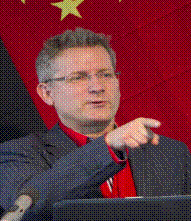 Prof. Steffen Hackbarth received his Ph.D. degree in experimental physics from HU Berlin in 2000. Ever since, he was working in the field of time-resolved spectroscopy in the time range ps to ms with a special focus at the triplet processes of photosensitizers. He is member of the faculty, the institute council and head of the photobiophysics group and at Humboldt University Berlin.
Prof. Steffen Hackbarth received his Ph.D. degree in experimental physics from HU Berlin in 2000. Ever since, he was working in the field of time-resolved spectroscopy in the time range ps to ms with a special focus at the triplet processes of photosensitizers. He is member of the faculty, the institute council and head of the photobiophysics group and at Humboldt University Berlin.
His research focuses on molecular photobiophysics, especially on fundamental research in the field of photosensitization, passive drug delivery and diffusion processes during Photodynamic Therapy. Technical developments focus on singlet oxygen luminescence detection in vivo and other heterogeneous environments at highest sensitivity.
One of his interests is to make cutting edge detection technology easily available to other researchers. In 2012, he received the first price innovation award of the SPIE Europe for the development of a compact time-resolved singlet oxygen luminescence detection system. In that context, he was co-founder of SHB Analytic GmbH, a university spin-off for the development of compact user-friendly NIR detection systems.
In 2017 he was invited lecturer in Sao Paulo /Brazil. In 2019 he was invited as specialist for singlet oxygen detection to China within the PIFI Initiative and in 2020, the work of the group on the field of Photodynamic deactivation of micro organisms was honored with the Clean Zone Award. He has authored more than 60 peer-reviewed papers, patents and book chapters. His latest book “Singlet Oxygen Detection and Imaging” was just released by Morgan & Claypool.
KEYNOTE SPEECH
15:10-15:30, Tuesday, Nov. 30, 2021
MicroLED Display Technology and Progress in Commercialized
Dr. Chen-Ke Hsu(中国台湾)
Sanan Optoelectronics, Taiwan
Abstract
MicroLED has strong advantages in brightness, contract, response time, lifetime and power consumption, etc, which realizes seamless tiling, high brightness, high resolution, perfect HDR, absolute reliability, transparent & free-form factor displays and applications. The technology difficulty and cost/yield will be the challenge for microLED mass production and commercialization. MicroLED display is combination of ultra-small chip with backplane through mass transfer technology. High performance RGB MicroLEDs, MicroLED configurations & structures, mass transfer technologies, MicroLED package technologies are shown. The WPE of R/G/B improved in low and high current densities. The new approach small pitch package product can be the solution for shortening the commercialization.
About the speaker
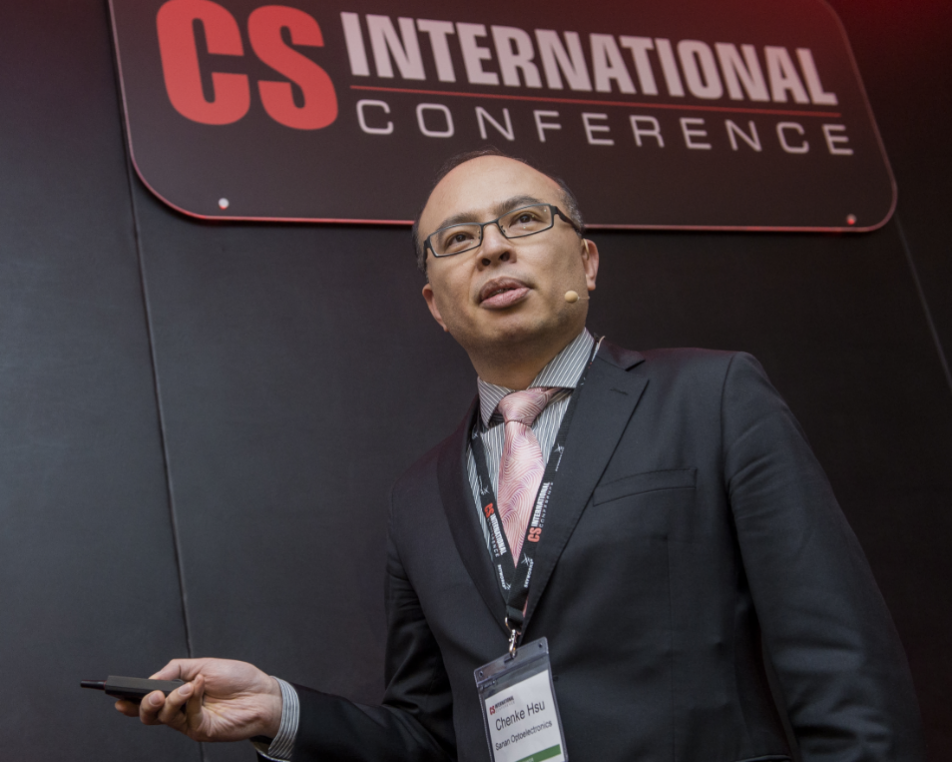 Dr. Chen-Ke Hsu is CTO of Sanan Optoelectronics Corporation, a biggest and high performance LED epiwafer and chip manufacturer. He obtained a Ph. D degree in Electrophysics from Chiao Tung University,Taiwan in 2000. He has engaged in many years of semiconductor lighting LED epitaxy, chip and package technical and R&D management. He is also expert in LED products performance, yield and quality improvement technology. Dr. Hsu has published 19 papers and conference papers of well-known journals. He also has 300 granted and pending patents. Dr. Hsu presided over a lot of projects to improve competitiveness of products. He is focus on new growing LED market in UVB/UVC LED, biometric recognition(Iris, VCESLs), LD, special application/package and MiniLED/MicroLED.
Dr. Chen-Ke Hsu is CTO of Sanan Optoelectronics Corporation, a biggest and high performance LED epiwafer and chip manufacturer. He obtained a Ph. D degree in Electrophysics from Chiao Tung University,Taiwan in 2000. He has engaged in many years of semiconductor lighting LED epitaxy, chip and package technical and R&D management. He is also expert in LED products performance, yield and quality improvement technology. Dr. Hsu has published 19 papers and conference papers of well-known journals. He also has 300 granted and pending patents. Dr. Hsu presided over a lot of projects to improve competitiveness of products. He is focus on new growing LED market in UVB/UVC LED, biometric recognition(Iris, VCESLs), LD, special application/package and MiniLED/MicroLED.
KEYNOTE SPEECH
15:50-16:10, Tuesday, Nov. 30, 2021
Short-Reach Optical Communications: A Review of Current Technologies and Future Trends
Prof. Keping Long (中国)
University of Science and Technology Beijing, China
Abstract
Driven primarily by cloud service and data-center applications, short-reach optical communication has become a key market segment and growing research area in recent years. Short-reach systems are characterized by direct detection-based receiver configurations and other low-cost and small form factor components that induce transmission impairments unforeseen in their coherent counterparts. Innovative signaling and digital signal processing (DSP) play a pivotal role in enabling these components to realize their ultimate potentials and meet data rate requirements in cost-effective manners. This talk presents an overview of recent DSP developments for short-reach communications systems and discusses future trends.
About the speaker
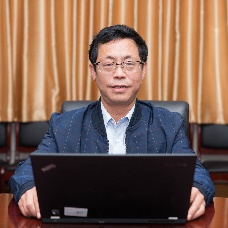 Prof. Keping Long received his M.S. and Ph.D. degrees at UESTC in 1995 and 1998, respectively. He worked as an associate professor at BUPT. From July 2001 to November 2002, he was a research fellow in the ARC Special Research Centre for Ultra Broadband Information Networks (CUBIN) at the University of Melbourne, Australia. He is now a professor at the School of Computer and Communication Engineering (CCE), University of Science and Technology Beijing. He is a member of the Editorial Committee of Sciences in China Series F and China Communications. He has also been a TPC and ISC member for COIN, IEEE IWCN, ICON, and APOC, and Organizing Co-Chair of IWCMC ’06, TPC Chair of COIN ’05/’08, and TPC Co-Chair of COIN ’08/’10, He was awarded the National Science Fund Award for Distinguished Young Scholars of China in 2007 and selected as the Chang Jiang Scholars Program Professor of China in 2008. His research interests are optical Internet technology, new generation network technology, wireless information networks, value-added service, and secure network technology. He has published over 200 papers, 20 keynotes, and invited talks.
Prof. Keping Long received his M.S. and Ph.D. degrees at UESTC in 1995 and 1998, respectively. He worked as an associate professor at BUPT. From July 2001 to November 2002, he was a research fellow in the ARC Special Research Centre for Ultra Broadband Information Networks (CUBIN) at the University of Melbourne, Australia. He is now a professor at the School of Computer and Communication Engineering (CCE), University of Science and Technology Beijing. He is a member of the Editorial Committee of Sciences in China Series F and China Communications. He has also been a TPC and ISC member for COIN, IEEE IWCN, ICON, and APOC, and Organizing Co-Chair of IWCMC ’06, TPC Chair of COIN ’05/’08, and TPC Co-Chair of COIN ’08/’10, He was awarded the National Science Fund Award for Distinguished Young Scholars of China in 2007 and selected as the Chang Jiang Scholars Program Professor of China in 2008. His research interests are optical Internet technology, new generation network technology, wireless information networks, value-added service, and secure network technology. He has published over 200 papers, 20 keynotes, and invited talks.
KEYNOTE SPEECH
16:10-16:30, Tuesday, Nov. 30, 2021
Advances of Carbon Nanotube Field Effect Transistors for Ultralow Power Applications
Prof. Qing Zhang(新加坡)
Nanyang Technological University, Singapore
Abstract
Ultralow power signal processing is in great demand especially for remote sensing circuitry in IoT systems, implantable devices in health-care systems, etc. which usually need to work under a limited battery lifetime or a battery-less energy harvesting scheme. To significantly reduce the power consumption of MOSFETs and CMOS circuits, operating MOSFETs in the subthreshold region could be an optional solution. Unfortunately, subthreshold operation of silicon or other ordinary semiconductors based MOSFETs generally is very slow. Such slow operations mainly result from the exponentially decreased subthreshold source and drain current at a small biased voltage, leading to slow charging and discharging of the load capacitance. Compared to silicon, single walled caron nanotubes (SWCNTs) offer unique geometrical and electrical properties, e.g. very high intrinsic carrier mobility, very small quantum capacitance and very narrow depletion region, etc. All these excellent properties could make SWCNT-FETs work in the subthreshold region without significantly slowing down their operations. In this talk, I present our work on Schottky barrier (SB) SWCNT-FETs. With a high-k gate dielectric, ultrathin SWCNT channel, and asymmetric gate structure, our SWCNT-FETs demonstrate highly efficient gate electrostatic control over the SWCNT channel and the SB at the source contact, resulting in a steep subthreshold switching characteristic with a small subthreshold swing of ~ 67 mV/dec, a large current on/off ratio of ~ 106, and a low off-state current of ~ 0.5 pA. A PMOS inverter built with the subthreshold SB-SWCNT-FETs exhibits a well-defined logic functionality and small-signal amplification capability under a low supply voltage of ~ 0.5 V and an ultralow-power of £ 1 pW.
About the speaker
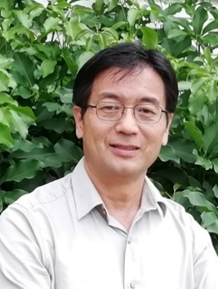 Prof. Qing Zhang is a professor at Centre of Micro-/Nano-electronics, School of Electrical and Electronic Engineering, Nanyang Technological University (NTU), Singapore. His research interests cover nanomaterials and nano/micro-electronic devices, carbon/silicon based thin films, etc. His attention focuses on carbon nanotube and nanostructure-based devices and fundamentals, etc. He and his group members have studied functionalized carbon nanotubes for several types of sensors, logic circuits and Li-ion batteries, etc. He has published more than 260 peer-review scientific papers in the fields of electronic materials, physics and devices for data processing, sensing and energy storage and harvesting.
Prof. Qing Zhang is a professor at Centre of Micro-/Nano-electronics, School of Electrical and Electronic Engineering, Nanyang Technological University (NTU), Singapore. His research interests cover nanomaterials and nano/micro-electronic devices, carbon/silicon based thin films, etc. His attention focuses on carbon nanotube and nanostructure-based devices and fundamentals, etc. He and his group members have studied functionalized carbon nanotubes for several types of sensors, logic circuits and Li-ion batteries, etc. He has published more than 260 peer-review scientific papers in the fields of electronic materials, physics and devices for data processing, sensing and energy storage and harvesting.
KEYNOTE SPEECH
16:30-16:50, Tuesday, Nov. 30, 2021
The Brief Story of Compound Semiconductor
Prof. Shumin Wang(瑞典)
Chalmers University of Technology, Sweden
Abstract
As complimentary to silicon which lays down the foundation for modern microelectronics, compound semiconductor plays a pivotal role in the ever-increasing information and communication technology. The two salient physical properties, excellent electron velocity and efficient light emission, enable compound semiconductors to be widely used as high- speed transistors, light emitting diodes and laser diodes, solar cells and photodetectors etc. in energy, communication, medicine, environment, security, defense, entertainment as well as many other sectors in our daily life. Such a revolutionary paradigm shift is possible only when it is able to manipulate materials at the atomic scale using nanotechnology. In my talk, I will briefly review the history of development of compound semiconductors, highlight its impact on basic physics and modern devices, and present a future outlook with a few examples of current research frontiers in this field.
About the speaker
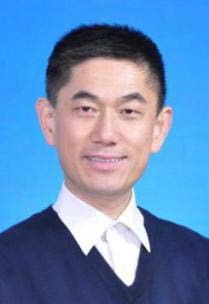 Prof. Shumin Wang is an expert on semiconductor materials and devices of Chinese origin. He obtained a bachelor’s degree in physics and a master’s degree in laser physics from Fudan University in 1985 and 1988, respectively, and a doctorate in semiconductor physics from the University of Gothenburg, Sweden in 1994. In the same year, he continued his study in Chalmers University of Technology in Sweden. He became an associate professor in 1999 and promoted to professor in 2008. In 2012, he was selected as one of the “Thousand Talents Program” of the Organization Department of the CPC Central Committee. From 2013 to 2019, he researched with the Shanghai Institute of Microsystem and Information Technology, Chinese Academy of Sciences, and was a distinguished professor at Shanghai University of Science and Technology. He served as deputy Director of state Key Laboratory of Information Functional Materials and Director of Key Laboratory of Terahertz Solid State Technology, Chinese Academy of Sciences. Professor Wang Shumin has been studying semiconductor material growth and device physics for more than 30 years, and has long been engaged in III-V compound semiconductor heterojunction and nanostructure materials and their integration with Si-based monolithic materials, epitaxial growth of two-dimensional materials, material physics, microelectronics. He has maintained a number of world records in the field of microelectronics and optoelectronic devices. Up to now, he has written 11 English monographs, and has published more than 270 SCI papers and more than 230 international conference reports. He has authorized more than 20 Chinese patents and 2 international patents. He has educated more than 30 domestic and foreign postgraduates and postgraduates.
Prof. Shumin Wang is an expert on semiconductor materials and devices of Chinese origin. He obtained a bachelor’s degree in physics and a master’s degree in laser physics from Fudan University in 1985 and 1988, respectively, and a doctorate in semiconductor physics from the University of Gothenburg, Sweden in 1994. In the same year, he continued his study in Chalmers University of Technology in Sweden. He became an associate professor in 1999 and promoted to professor in 2008. In 2012, he was selected as one of the “Thousand Talents Program” of the Organization Department of the CPC Central Committee. From 2013 to 2019, he researched with the Shanghai Institute of Microsystem and Information Technology, Chinese Academy of Sciences, and was a distinguished professor at Shanghai University of Science and Technology. He served as deputy Director of state Key Laboratory of Information Functional Materials and Director of Key Laboratory of Terahertz Solid State Technology, Chinese Academy of Sciences. Professor Wang Shumin has been studying semiconductor material growth and device physics for more than 30 years, and has long been engaged in III-V compound semiconductor heterojunction and nanostructure materials and their integration with Si-based monolithic materials, epitaxial growth of two-dimensional materials, material physics, microelectronics. He has maintained a number of world records in the field of microelectronics and optoelectronic devices. Up to now, he has written 11 English monographs, and has published more than 270 SCI papers and more than 230 international conference reports. He has authorized more than 20 Chinese patents and 2 international patents. He has educated more than 30 domestic and foreign postgraduates and postgraduates.
KEYNOTE SPEECH
16:50-17:10, Tuesday, Nov. 30, 2021
Emerging chalcogenide solar cells
Prof. Xiaojing Hao(澳大利亚)
University of New South Wales, Australia
Abstract
Crystalline Si modules dominate the photovoltaic (PV) market and thin film like amorphous-Si, Cu(In,Ga)(S,Se)2, CdTe, solar cells have all been commercialized to varying degrees of success. Whilst these technologies could feasibly cover the majority of PV applications, most of the established platforms face challenges related to either the use of critical raw materials, toxic elements, long-term stability, conversion efficiency limitations, cost or low technological flexibility. These are all important considerations that must be taken into account as the PV field begins to look towards an era of terawatt level power generation. Increasing the diversity of viable photovoltaic materials is critical to allow greater adaptability as the technology continues to expand and develop not only for further increasing the efficiency/cost but also fulfill various application areas. This encourages a continued search for PV materials, particularly those stable, green, and cheap PV materials. This talk will focus on the promise and recent progress on the emerging chalcogenide solar cells.
About the speaker
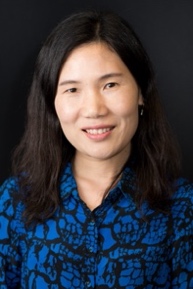 Prof. Xiaojing Hao obtained her PhD in the School of Photovoltaic and Renewable Energy Engineering of UNSW in 2010, and currently the Scientia Associate Professor at UNSW. Dr Hao has focused her research on low-cost, high-efficiency thin film solar cells and tandem solar cells for more than ten years, researching on various energy materials, initially using Si, and then earth-abundant compound semiconductor materials such as chalcogenide and perovskite for both solar photovoltaic and solar fuel applications. A/Prof Hao now leads a strong group in the above areas, achieving a number of efficiency records on emerging thin film solar cells. A/Prof Hao has published >150 peer-reviewed journal papers, including publications in Nature Energy, with several awards for her research excellence. She was the recipient of Inaugural ASI/ARENA Postdoc Fellow, previous Australian Research Council (ARC) DECRA, and now ARC Future Fellow. She was awarded a number of prestigious national prizes, including 2020 Prime Minister’s Prizes for Science: Malcolm McIntosh Prize for Physical Scientist of the Year, 2021 Australian Academy of Science Pawsey Medal.
Prof. Xiaojing Hao obtained her PhD in the School of Photovoltaic and Renewable Energy Engineering of UNSW in 2010, and currently the Scientia Associate Professor at UNSW. Dr Hao has focused her research on low-cost, high-efficiency thin film solar cells and tandem solar cells for more than ten years, researching on various energy materials, initially using Si, and then earth-abundant compound semiconductor materials such as chalcogenide and perovskite for both solar photovoltaic and solar fuel applications. A/Prof Hao now leads a strong group in the above areas, achieving a number of efficiency records on emerging thin film solar cells. A/Prof Hao has published >150 peer-reviewed journal papers, including publications in Nature Energy, with several awards for her research excellence. She was the recipient of Inaugural ASI/ARENA Postdoc Fellow, previous Australian Research Council (ARC) DECRA, and now ARC Future Fellow. She was awarded a number of prestigious national prizes, including 2020 Prime Minister’s Prizes for Science: Malcolm McIntosh Prize for Physical Scientist of the Year, 2021 Australian Academy of Science Pawsey Medal.
KEYNOTE SPEECH
17:10-17:30, Tuesday, Nov. 30, 2021
Wireless Energy Harvesting and Power Transfer
Prof. Yi Huang(英国)
The University of Liverpool, UK
Abstract
Wireless energy harvesting (WEH) is about how to obtain energy from the wireless environment efficiently while wireless power transfer (WPT) is about how to efficiently transfer energy wirelessly. They are linked by a key device called rectenna: rectifying antenna which is the focus of this talk. Normally WEH should be a broadband system in order to harvest as much energy as possible while WPT is a narrowband system. It is shown that new technologies (such as metamaterials and metasurfaces) can significantly improve the power transfer efficiency and operational distance for WPT systems. They can also improve the energy conversion efficiency of WEH by making the reception less sensitive to incident wave angle and polarization. It is also shown that metamaterial-based rectennas can achieve a higher RF to DC conversion efficiency. Furthermore, metamaterials can also be used as either parasitic elements or loading components to improve WEH performance in terms of circuit size, beamwidth, and conversion efficiency. A range of interesting work in this area at Liverpool will also be reported, including the integration of communication and wireless power transfer.
About the speaker
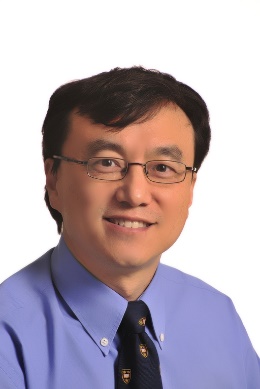 Prof. Yi Huang received DPhil from the University of Oxford, UK in 1994. He has been conducting research in the areas of wireless communications, applied electromagnetics, radar, and antennas since 1987. His experience includes 3 years spent with NRIET (China) as a Radar Engineer and various periods with the Universities of Birmingham, Oxford, and Essex in the UK as a member of research staff. He worked as a Research Fellow at British Telecom Labs in 1994 and then joined the Department of Electrical Engineering & Electronics, the University of Liverpool, UK as a Faculty in 1995, where he is now a full Professor in Wireless Engineering, the Head of High Frequency Engineering Group.
Prof. Yi Huang received DPhil from the University of Oxford, UK in 1994. He has been conducting research in the areas of wireless communications, applied electromagnetics, radar, and antennas since 1987. His experience includes 3 years spent with NRIET (China) as a Radar Engineer and various periods with the Universities of Birmingham, Oxford, and Essex in the UK as a member of research staff. He worked as a Research Fellow at British Telecom Labs in 1994 and then joined the Department of Electrical Engineering & Electronics, the University of Liverpool, UK as a Faculty in 1995, where he is now a full Professor in Wireless Engineering, the Head of High Frequency Engineering Group.
Prof Huang has published over 400 refereed papers in leading international journals and conference proceedings, and authored Antennas: from Theory to Practice (Wiley, 2008, 2021), Reverberation Chambers: Theory and Applications to EMC and Antenna Measurements (Wiley, 2016), and Anechoic and Reverberation Chambers (Wiley and IEEE Press, 2019). He has received many research grants from research councils, government agencies, charity, EU, and industry, and is a recipient of 8 awards (e.g. BAE Systems Chairman’s Award 2017, IET Innovation Award 2018, and many Best Paper Awards), and served on a number of national and international technical committees and been an Editor, Associate Editor or Guest Editor of five international journals. He has been a keynote/invited speaker and organizer of many conferences and workshops (e.g. IEEE iWAT2010, LAPC2012 and EuCAP2018). He is at present the Editor-in-Chief of Wireless Engineering and Technology, Associate Editor of IEEE Antennas and Wireless Propagation Letters, UK and Ireland Rep to European Association of Antenna and Propagation (EurAAP 2016-2020), a Fellow of IEEE, and a Fellow of IET. More information can be found from: https://www.liverpool.ac.uk/electrical-engineering-and-electronics/staff/yi-huang/
KEYNOTE SPEECH
8:30-9:00, Wednesday, Dec. 1, 2021
High-Performance Metamaterials and Applications
Prof. Zhizhang (David) Chen and Yuehe Ge(加拿大)
Dalhousie University, Canada
Fuzhou University, China
Email: zz.chen@ieee.org
Abstract
The control of reflection and transmission properties of electromagnetic waves are essential and persistent topics from microwaves to optical waves. Metamaterials, which can realize unprecedented controls of electromagnetic waves, have attracted enormous interest in the past decades. More recently, metasurfaces have emerged and realized full control of electromagnetic waves. They have shown strong potential for development of ultra-thin electromagnetic devices, such as ultrathin metasurface lens, spin-orbit manipulation, metasurface holograms, and some other functional interfaces. Most of the metasurfaces presented so far have been focused on full controls of phases, although attempts have been made to control amplitude and phase separately by designing particular shapes of the unit cell. Along this line, we have developed broadband high-efficiency ultrathin metasurfaces with simultaneous and independent control of amplitudes and phases for both reflection and transmission modes. In addition, by incorporating active devices, such as pin diodes and varactors, the phases of metasurfaces can be dynamically controlled, resulting in low-cost electrically reconfigurable metasurfaces or reconfigurable intelligent surfaces (RISs). In this talk, we will present the above-mentioned novel metasurfaces and their applications. They include 1-bit and 2-bit multi-polarization reflectarray antennas. They present many potential new applications that are not foreseen before.
About the speaker
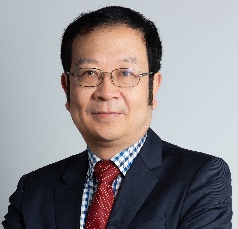 Zhizhang Chen received the Master degree in Radio Engineering from Southeast University, P. R. China, the Ph.D. degree in Electrical Engineering from the University of Ottawa, Canada. He was an NSERC post-doctoral fellow with McGill University, Montreal, Canada. He is a professor in Electrical and Computer Engineering. He has authored and co-authored over 400 journal and conference papers and has been a guest editor, track editor, and associate editor for IEEE journals, including the IEEE Transactions on Microwave Theory and Techniques, IEEE Journal of Microwaves, and the IEEE Journal on Multiscale and Multiphysics Computational Techniques. His current research interests include time-domain electromagnetic modeling techniques, ultra-wideband wireless communication systems, and wireless power transfer. He is the Fellow of the IEEE, the Canadian Academy of Engineering (加拿大工程院院士) and the Engineering Institute of Canada.
Zhizhang Chen received the Master degree in Radio Engineering from Southeast University, P. R. China, the Ph.D. degree in Electrical Engineering from the University of Ottawa, Canada. He was an NSERC post-doctoral fellow with McGill University, Montreal, Canada. He is a professor in Electrical and Computer Engineering. He has authored and co-authored over 400 journal and conference papers and has been a guest editor, track editor, and associate editor for IEEE journals, including the IEEE Transactions on Microwave Theory and Techniques, IEEE Journal of Microwaves, and the IEEE Journal on Multiscale and Multiphysics Computational Techniques. His current research interests include time-domain electromagnetic modeling techniques, ultra-wideband wireless communication systems, and wireless power transfer. He is the Fellow of the IEEE, the Canadian Academy of Engineering (加拿大工程院院士) and the Engineering Institute of Canada.
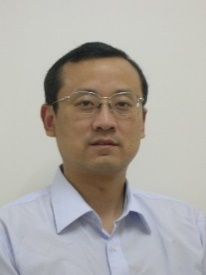 Yuehe Ge received Ph.D. degree in electronic engineering from Macquarie University, Sydney, Australia, in 2003. From 1991 to 1999, he was an Antenna Engineer at Nanjing Marine Radar Institute, China. From 2002 to 2011, he was a Research Fellow and a lecturer in the Department of Electronic Engineering, Macquarie University, Australia. In June 2011, he joined Huaqiao University, China, and became a Full Professor. Since July 2020, he has been a Professor at Fuzhou University, China. He has published over 200 journal and conference publications, 2 book chapters, and 4 Chinese patents.
Yuehe Ge received Ph.D. degree in electronic engineering from Macquarie University, Sydney, Australia, in 2003. From 1991 to 1999, he was an Antenna Engineer at Nanjing Marine Radar Institute, China. From 2002 to 2011, he was a Research Fellow and a lecturer in the Department of Electronic Engineering, Macquarie University, Australia. In June 2011, he joined Huaqiao University, China, and became a Full Professor. Since July 2020, he has been a Professor at Fuzhou University, China. He has published over 200 journal and conference publications, 2 book chapters, and 4 Chinese patents.
Professor Ge received four prestigious prizes from China State Shipbuilding Corporation and China Ship Research & Development Academy in 1995 and 1996 for his contributions to China State research projects. He received 2000 IEEE MTT-S Graduate Fellowship Awards and 2002 Max Symons Memorial Prize of IEEE NSW Section, Australia. He is the co-winner of the 2004 Macquarie University Innovation Awards-Invention Disclosure Award. He was in the 100 Talents Programme of Fujian Province, China, and the 100 Talents Programme of Xiamen, China, respectively, both in 2012, and the Recruitment Program of High-End Foreign Experts of State Administration of Foreign Expert Affairs, China, 2013
KEYNOTE SPEECH
9:00-9:20, Wednesday, Dec. 1, 2021
Overview of Advanced GaN HEMT Modelling and Measurements at NUS
Prof. Yongxin Guo (新加坡)
FIEEE, National University of Singapore, Singapore
Abstract
GaN HEMT is an ideal candidate for advanced circuit designs in 5th generation and satellite communication systems due to its inherent advantages such as high power density and high breakdown voltage. The performance of GaN devices is strongly affected by different effects, such as the thermal and trapping effects. Thus, advanced modelling and measurement techniques have been developed to accurately characterize GaN devices and investigate these effects, including pulse, double-pulse, and dynamic-bias techniques. Various large-signal models have been proposed for GaN-based microwave circuit designs, such as physics-based, table-based, empirical, and neural network-based models. In addition, many methods have been developed to model the thermal and trapping effects with great success. However, challenges still exist in the accurate and reliable modeling of GaN HEMTs. This presentation will give an overview of advanced GaN device modelling and measurement by my group at NUS.
About the speaker
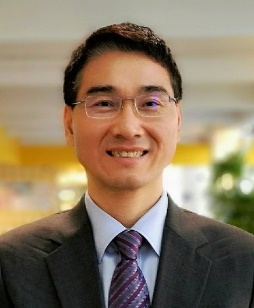 Prof. Yongxin Guo is currently a Full Professor at the Department of Electrical and Computer Engineering, National University of Singapore (NUS). Concurrently, He is Director, Center for Peak of Excellence on Smart Medical Technology at NUS Suzhou Research Institute and Co-Director, Center for Information Engineering and Artificial Intelligence, NUS Chongqing Research Institute. He has authored or co-authored over 500 international journal and conference papers and 4 book chapters. He holds over 40 granted/filed patents in USA, China and Singapore. His current research interests include RF sensing, antennas and electromagnetics in medicine; wireless power for biomedical applications and internet of things; wideband and small antennas for wireless communications; and RF and microwave circuits and MMIC modelling and design. He has graduated 18 PhD students at NUS.
Prof. Yongxin Guo is currently a Full Professor at the Department of Electrical and Computer Engineering, National University of Singapore (NUS). Concurrently, He is Director, Center for Peak of Excellence on Smart Medical Technology at NUS Suzhou Research Institute and Co-Director, Center for Information Engineering and Artificial Intelligence, NUS Chongqing Research Institute. He has authored or co-authored over 500 international journal and conference papers and 4 book chapters. He holds over 40 granted/filed patents in USA, China and Singapore. His current research interests include RF sensing, antennas and electromagnetics in medicine; wireless power for biomedical applications and internet of things; wideband and small antennas for wireless communications; and RF and microwave circuits and MMIC modelling and design. He has graduated 18 PhD students at NUS.
Prof. Guo was the recipient of 2020 IEEE Microwave and Wireless Components Letters Tatsuo Itoh Prize of the IEEE Microwave Theory and Techniques Society. He is serving as Editor-in-Chief, IEEE Journal of Electromagnetics, RF and Microwave in Medicine and Biology for the term of 2020-2023. He served as the IEEE Fellow Evaluation Committee for IEEE Engineering in Medicine and Biology Society (2019-2020). Dr Guo was the Chair for IEEE AP-S Technical Committee on Antenna Measurement in 2018-2020. He served as Associate Editor for IEEE Antennas and Propagation Magazine (2018-2020), IEEE Journal of Electromagnetics, RF and Microwave in Medicine and Biology (2017 – 2020), Electronics Letters (2015-2019), IEEE Antennas and Wireless Propagation Letters (2013-2018), and IET Microwaves, Antennas & Propagation (2014-2017). He has served as General Chair/Co-Chair for a number of international conferences including IEEE IMBioC 2022, IEEE IMWS-AMP 2020 and 2021, APMC 2019, AWPT 2017, ACES-China 2017, IEEE IMWS-AMP 2015 and IEEE IMWS-Bio 2013. He has served as Technical Program Committee (TPC) co-chair for IEEE IMBioC 2020, IEEE IMWS-AMP 2017/2019 and RFIT2009. He is an IEEE Fellow.
KEYNOTE SPEECH
9:20-9:40, Wednesday, Dec. 1, 2021
Peptide-based Data Storage
Prof. Francis C.M. Lau (中国香港)
The Hong Kong Polytechnic University, Hong Kong
Abstract
Humans are generating more than one million GB of data each second. According to Statista, we will create a total of 79 ZB (1 ZB = 10^21 bytes) of data in 2021. How to store such a tremendous and ever-increasing amount of data will become an issue. Currently, we use mostly inorganic mate-rials such as magnetic tapes and silicon-based devices for storing data. In the future, is there a possibility that we will use organic data storage systems? In this seminar, we will introduce our recent work on storing data using peptides.
About the speaker
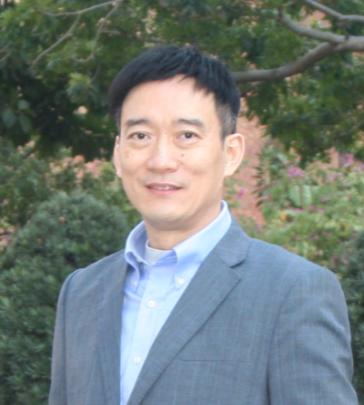 Prof. Francis Lau received both his Bachelor and PhD degrees from King’s College London, University of London. He is currently a professor at the Department of Electronic and Information Engineering, The Hong Kong Polytechnic University. Prof. Lau served as an associate editor for various journals including IEEE Trans. on Circuits and Systems I & II, and IEEE Circuits and Systems Magazine. He has been a guest associate editor of International Journal of Bifurcation and Chaos since 2010. He was the General Co-chair of International Symposium on Turbo Codes & Iterative Information Processing (2018) and the Chair of Technical Committee on Nonlinear Circuits and Systems, IEEE Circuits and Systems Society (2012-13). His main research interests include channel coding, chaos-based digital communications, cooperative networks, wireless sensor networks, applications of complex-network theories, and wireless communications. Prof. Lau is a Fellow of IEEE and a Fellow of IET.
Prof. Francis Lau received both his Bachelor and PhD degrees from King’s College London, University of London. He is currently a professor at the Department of Electronic and Information Engineering, The Hong Kong Polytechnic University. Prof. Lau served as an associate editor for various journals including IEEE Trans. on Circuits and Systems I & II, and IEEE Circuits and Systems Magazine. He has been a guest associate editor of International Journal of Bifurcation and Chaos since 2010. He was the General Co-chair of International Symposium on Turbo Codes & Iterative Information Processing (2018) and the Chair of Technical Committee on Nonlinear Circuits and Systems, IEEE Circuits and Systems Society (2012-13). His main research interests include channel coding, chaos-based digital communications, cooperative networks, wireless sensor networks, applications of complex-network theories, and wireless communications. Prof. Lau is a Fellow of IEEE and a Fellow of IET.
KEYNOTE SPEECH
9:40-10:00, Wednesday, Dec. 1, 2021
Intelligent Facial Analytics and Applications
Prof. Wen-Huang Cheng(中国台湾)
Yang Ming Chiao Tung University, Taiwan
Abstract
Facial behavior (e.g., facial expressions) is a type of nonverbal communication, which is a result of conscious suppression (intentional) or unconscious repression (unintentional) and can be viewed as a “leakage” of people’s true emotional states or feelings. In recent years, facial behavior understanding has drawn much attention because it can benefit a wide range of ‘smart’ applications through insightful understanding of the user, e.g., clinical diagnosis, depression analysis, customer understanding, and even business negotiation and police interrogation. In facial behaviors, micro-expressions are challenging to be analyzed due to the short span of time (0.5 seconds or shorter) and the fine-grained changes (low-intensity movements of the face). It is also difficult to collect and label micro-expression data. Even for human experts, it takes 2 hours to label a 1-minute video of facial micro-expressions on average. Therefore, this talk aims to present our latest research results on intelligent facial analytics and our experience on shipping the developed inventions and technologies to real applications.
About the speaker
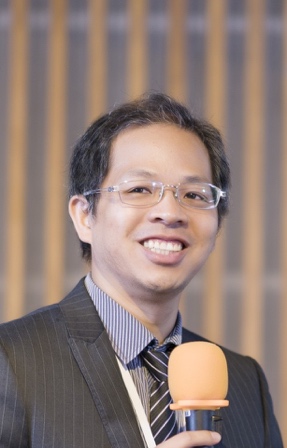 Prof. Wen-Huang Cheng is Distinguished Professor with the Institute of Electronics, Yang Ming Chiao Tung University (NYCU) in Taiwan. His current research interests include multimedia, artificial intelligence, computer vision, and machine learning. He has actively participated in international events and played important leading roles in prestigious journals and conferences and professional organizations, like Associate Editor for IEEE Transactions on Multimedia (T-MM), General co-chair for IEEE ICME (2022) and ACM ICMR (2021), Chair-Elect for IEEE MSA technical committee, governing board member for IAPR. He has received numerous research and service awards, including the Best Paper Award of 2021 IEEE ICME and the Outstanding Associae Editor Award of IEEE T-MM. He is IEEE Distinguished Lecturer, ACM Distinguished Member, and IET Fellow.
Prof. Wen-Huang Cheng is Distinguished Professor with the Institute of Electronics, Yang Ming Chiao Tung University (NYCU) in Taiwan. His current research interests include multimedia, artificial intelligence, computer vision, and machine learning. He has actively participated in international events and played important leading roles in prestigious journals and conferences and professional organizations, like Associate Editor for IEEE Transactions on Multimedia (T-MM), General co-chair for IEEE ICME (2022) and ACM ICMR (2021), Chair-Elect for IEEE MSA technical committee, governing board member for IAPR. He has received numerous research and service awards, including the Best Paper Award of 2021 IEEE ICME and the Outstanding Associae Editor Award of IEEE T-MM. He is IEEE Distinguished Lecturer, ACM Distinguished Member, and IET Fellow.
KEYNOTE SPEECH
10:20-10:40, Wednesday, Dec. 1, 2021
Deep Face Synthesis: Reconstruction, Augmentation, and Animation
Prof. Chia-Wen Lin(中国台湾)
Tsing Hua University, Taiwan
Abstract
This talk introduces deep face synthesis in three aspects: 1) 3D face reconstruction, 2) face augmentation, and 3) anime-face generation from a single face image. Monocular face reconstruction, aiming to recover the corresponding 3D face model from a single face image, has found a wide range of applications, such as face alignment, face editing, expression recognition, face augmentation, and AR/VR. Face images taken in-the-wild, however, usually involve expressions, poses, and shading with a large range of variety, which can easily degrade the performance of face synthesis. The first part of this talk will introduce a Dual-Stream Face Reconstruction Net (DS-FRN) that consists of a geometry stream and a texture stream to achieve identity-preserving face reconstruction even with facial expressions. In the second part, we present a Domain-transferred Face Augmentation Net (DotFAN) to achieve identity-preserving face normalization/augmentation with various shadings, poses, and expressions. DotFAN can significantly boost the performance of identity recognition. Finally, we demonstrate a framework to translate a portrait photo-face into an anime-face which is style-consistent with a given reference anime-face. Experimental results on public face datasets demonstrate the efficacy of our approaches.
About the speaker
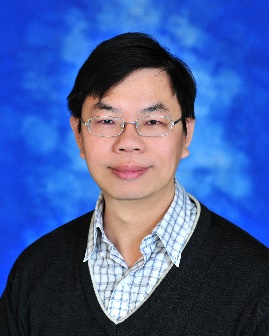 Prof. Chia-Wen Lin is currently a Professor with the Department of Electrical Engineering, Tsing Hua University (NTHU), Taiwan. He also serves as Deputy Director of the AI Research Center of NTHU. His research interests include image/video processing, computer vision, and video networking.
Prof. Chia-Wen Lin is currently a Professor with the Department of Electrical Engineering, Tsing Hua University (NTHU), Taiwan. He also serves as Deputy Director of the AI Research Center of NTHU. His research interests include image/video processing, computer vision, and video networking.
Prof. Lin is an IEEE Fellow, and has been serving on IEEE Circuits and Systems Society (CASS) Fellow Evaluating Committee since 2021. He has served as Steering Committee Chair of IEEE ICME (term: 2020-2021), IEEE CASS Distinguished Lecturer (term: 2018-2019), and President of the Chinese Image Processing and Pattern Recognition (IPPR) Association, Taiwan (term: 2019-2020). He served as Associate Editor of IEEE Transactions on Image Processing, IEEE Transactions on Multimedia, IEEE Transactions on Circuits and Systems for Video Technology, and IEEE Multimedia. He also served as a Steering Committee member of the IEEE Transactions on Multimedia during 2013-2015. He was Chair of the Multimedia Systems and Applications Technical Committee of the IEEE CASS. He has served as TPC Chair of IEEE ICME in 2010 and IEEE ICIP in 2019, and the Conference Chair of IEEE VCIP in 2018. His papers won the Best Paper Award of IEEE VCIP 2015, and the Young Investigator Award of VCIP 2005.
KEYNOTE SPEECH
10:40-11:00, Wednesday, Dec. 1, 2021
Collaborating with Industry: A Canadian University’s Perspective
Prof. Zheng Liu(加拿大)
The University of British Columbia, Canada
Abstract
Collaboration with industry is critical for research and training or education at university. The partnerships bring challenges and opportunities for university research. This presentation will describe such challenges and opportunities from a Canadian university’s perspective. The support from the Canadian government and funding agencies for collaborative research and development is also described. In addition, the role of university professors and students in collaboration is discussed. The potential benefits of the cooperation and the existing problems to be addressed are highlighted in the presentation.
About the speaker
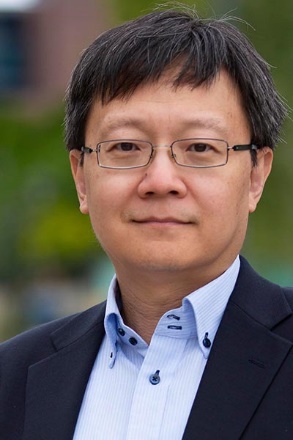 Prof. Zheng Liu received a Doctorate in engineering from Kyoto University, Kyoto, Japan, in 2000, and a Ph.D. degree from the University of Ottawa, Canada, in 2007, respectively. From 2000 to 2001, he was a Research Fellow with the Nanyang Technological University, Singapore. Dr. Liu then joined the National Research Council of Canada (Ottawa, Ontario) and worked for two research institutes of NRC (Aerospace [IAR] & Construction [IRC]). From 2012 to 2015, he worked as a Full Professor with Toyota Technological Institute, Nagoya, Japan. He is now with the Faculty of Applied Science at the University of British Columbia (Okanagan). His research interests include digital twin, data/information fusion, computer/machine vision, machine learning, smart sensor and industrial IoT, and non-destructive inspection and evaluation. Dr. Liu is a fellow of SPIE and a senior member of IEEE. He holds Professional Engineer licenses in both British Columbia and Ontario. In addition, Dr. Liu serves on the editorial boards for six journals.
Prof. Zheng Liu received a Doctorate in engineering from Kyoto University, Kyoto, Japan, in 2000, and a Ph.D. degree from the University of Ottawa, Canada, in 2007, respectively. From 2000 to 2001, he was a Research Fellow with the Nanyang Technological University, Singapore. Dr. Liu then joined the National Research Council of Canada (Ottawa, Ontario) and worked for two research institutes of NRC (Aerospace [IAR] & Construction [IRC]). From 2012 to 2015, he worked as a Full Professor with Toyota Technological Institute, Nagoya, Japan. He is now with the Faculty of Applied Science at the University of British Columbia (Okanagan). His research interests include digital twin, data/information fusion, computer/machine vision, machine learning, smart sensor and industrial IoT, and non-destructive inspection and evaluation. Dr. Liu is a fellow of SPIE and a senior member of IEEE. He holds Professional Engineer licenses in both British Columbia and Ontario. In addition, Dr. Liu serves on the editorial boards for six journals.
防疫指南
1、健康申报。外地来榕参会人员及会前一个半月内有境外旅居史的人员,需提供会前7天内新冠病毒核酸阴性检测报告。会议开幕3天前所有嘉宾、参会代表、媒体记者、工作人员、志愿者须依法如实完成会前健康申报,健康申报状况正常并取得“健康码”绿码者方可准备参加会议和会议服务工作。
2、有以下情况之一者,禁止参会:现为新冠肺炎确诊病例、疑似病例、无症状感染者及其密切接触者;处于集中隔离、居家隔离或社区健康随访管理期的出院确诊病例、疑似病例、无症状感染者及会前14天内相关病例复阳人员;会前一个半月内有境外旅居史且无会前7天内新冠病毒核酸检测阴性证明的;现居住在国内中高风险地区人员及14天内到过中高风险地区人员;会前48小时发热症状未消失;会前72小时腹泻、呕吐症状未消失的;健康码显示为黄码或红码的;经医疗卫生组专家评估后认定不适合参会的人员。
3、参会期间请遵守:减少不必要的外出、接待访客、参加聚集等活动;会议期间,应全程佩戴口罩,避免相互之间近距离长时间接触;进入酒店时,主动扫码、测体温、戴口罩;请每天按要求开展自我健康监测,一旦出现发热(体温≥37.3℃)、咳嗽等身体不适情况,立即报告会务组和驻点医务人员,积极配合医学排查和流行病学调查。
Epidemic Prevention Guidelines
1. Declaration of health status. Non-local participants in Fujian and those who have lived abroad within one and a half months before the meeting should provide a negative test report of novel coronavirus nucleic acid within 7 days before the meeting. 3 days before the conference’s opening, all guests, delegates, journalists, staff, and volunteers must truthfully complete the pre-conference health declaration according to law. Those who have regular health declaration status and have obtained the green “health code” can be prepared to attend the conference and the conference service work.
2. Any of the following situations is prohibited: confirmed cases, suspected cases, asymptomatic infected persons and their close contacts of COVID-19; confirmed cases, suspected cases,asymptomatic infected persons discharged from hospital and those who recovered from related cases within 14 days prior to the meeting in the period of centralized isolation, home isolation or community health follow-up management: those who have lived abroad within one and a half months before the meeting and have no negative evidence of novel coronavirus nucleic acid test within seven days before the meeting; those who are currently living in medium-high risk areas in China and those who have visited medium-high risk areas within 14 days; fever symptoms did not disappear 48 hours before the meeting, and diarrhea and vomiting symptoms did not disappear 72 hours before the meeting; the health code is shown as yellow or red; those who are deemed unsuitable for the meeting after being assessed by experts of the medical and health care group.
3. Please do during the conference: reduce unnecessary going out,receiving visitors, attending gatherings and other activities; during the meeting, you should wear a mask to avoid close contact with each other for a long time; when entering the hotel, take the initiative to scan the code, take the temperature, and wear a mask; please carry out self-health monitoring every day as required. In case of any physical discomfort such as fever (body temperature exceeds 37.3℃) or cough, report to the conference affairs team and the medical staff at the station immediately and actively cooperate with the medical investigation and epidemiological investigation.